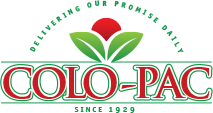
Broccoli is a member of the plant species Brassica oleracea, the same species as cabbage, kale, collard greens and cauliflower. First cultivated in the Mediterranean, broccoli has been a widely popular vegetable in the Italian peninsula since ancient Roman times. It was introduced to the United States by Italian immigrants, but did not gain much popularity until the 1920s. Broccoli grows in tree-like sprouts, with edible trunks and branches. There are two typical forms of broccoli: calabrese or sprouting broccoli is made up of many tightly grouped, tiny flower buds, which form the iconic broccoli head. This is by far the most popular kind of broccoli in the United States. The other type has heads that are curd-like, with no distinct sprouts. This is called cauliflower broccoli, or heading broccoli. The word broccoli is generally used to describe sprouting broccoli, and the heading variety is usually grouped with cauliflower. Broccoli is sold in two forms: florets and crowns. A floret is a small, bite-sized piece of broccoli. It is essentially an individual branch. The crown is a whole “tree” of broccoli, with one large trunk and multiple branches. Broccoli has become hugely popular throughout the world for its versatility in cooking, and for its health benefits. With high vitamin C, fiber and a variety of other vitamins and anti-cancer nutrients, broccoli is a great vegetable to include in a healthy diet.
What comes to a lot of people’s minds at the mention of broccoli are words like, “boiled, bland, and flavorless.” However, broccoli can be used in a variety of ways beyond simply boiling it and using it as a side dish. In fact, broccoli should probably never be boiled. Boiling broccoli does not only dull its flavor, studies have shown that boiling broccoli may also destroy many of its health benefits. Roasting or sautéing broccoli will bring a lot of flavor out of the broccoli, and these methods of cooking will retain the vegetable’s nutritional value. Sauté broccoli with almonds, butter and garlic for a wonderful broccoli almondine, a rich, delicious side dish. Roasted broccoli covered in melted cheddar is easily one of the most delicious ways to serve the vegetable. Broccoli salads can be a great, healthy way to start off dinner. Broccoli is often a component in Chinese cooking, and it goes well in spicy dishes alongside beef, pork, and chicken. Broccoli also pairs well with mushrooms in a variety of applications including soups and casseroles. Broccoli works well as a compliment to eggs, and is often found in omelets and quiches. Broccoli florets are great served raw with dips like hummus, cheese dip, or ranch dressing. The large stems from broccoli crowns are often a key component of vegetable stock. The stems can also be used to make broccoli-slaw, a variation on coleslaw featuring broccoli rather than cabbage. Leaves of the broccoli plant have a slightly bitter flavor, similar to kale and can be used in salad or in any application that kale can be used.
When picking out broccoli, look for florets with vibrant green buds that are firm and springy. The stems of fresh broccoli will also be very firm. Check for signs of holes in the stem, as this can be a sign of worm infestation, which is somewhat common, especially in organic broccoli. Fresh broccoli should be refrigerated and kept in a plastic bag, or any other airtight container. It will stay fresh for about a week. Broccoli can be kept frozen for much longer. As with any frozen food, broccoli will last indefinitely while frozen, but it is best used within eight months of freezing it. When broccoli begins to lose its green color, begins to turn yellow and limp, it is no longer fresh and should not be used. Always thoroughly rinse broccoli before use to remove any dirt or debris in the vegetable.


 BACK TO PRODUCTS
BACK TO PRODUCTS